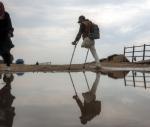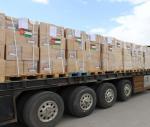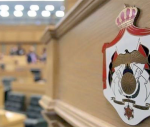You are here
Realising the great realisation
Mar 08,2021 - Last updated at Mar 08,2021
WASHINGTON, DC — In “The Great Realisation”, a compelling four-minute video, the poet Tomos Roberts (aka Tom Foolery) suggests a potential silver lining to the COVID-19 cataclysm. By forcing us to slow down, literally and metaphorically, we may now see the world differently, the cost of pollution, the value of personal connection, the pleasure of being outdoors, with clean air, and start being kinder to each other and to the planet. Writ large, such change could lead to more constructive policy solutions.
This is obviously an optimistic view, and it is easy to poke holes in it. For example, the refusal by many in the United States to accept the November 2020 presidential election result, which fueled the lethal attack on the US Capitol on January 6, points to a rise in destructive behaviour. Nevertheless, the US is also a country where policymaking in at least three areas may already be headed in a less confrontational, more positive direction, precisely because the pandemic is so awful that it forces us to rethink everything.
First, there is widespread support for extending short-term financial support to people hurt by the pandemic. There is, no surprise, some predictable opposition to the $1.9 trillion package currently on the table, including from those who think that so much spending will saddle the US with too much government debt.
But, as my co-author James Kwak has pointed out, these complaints rather miss the point, which is to help as many people as possible survive the pandemic, both medically and financially. This is the most basic proposition of survival economics: help people through the disaster. If a meteor hit our planet, we would not be wringing our hands about the potential abstract costs of increasing public debt; we would be focused on helping schoolchildren, families, first responders and everyone who lost their jobs, homes, or loved ones.
A pandemic is just like a meteor, in turns out, in that the pain and death it wreaks are random and senseless. Most of the population seems to grasp this. A recent poll found 76 per cent of voters supporting the full $1.9 trillion package, including a remarkable 60 per cent of Republicans and 70 per cent of independents. There is a strong groundswell in favour of supporting survivors.
Second, after a year of debate, often rancorous, regarding the reopening of schools, the discussion seems to have entered a new phase. Over the past month or so, the focus has shifted to reopening safely.
Precise solutions vary around the country, some states, like Ohio, are emphasising vaccination of teachers, while others, such as Massachusetts, are introducing comprehensive testing systems. There is a great effort underway, run by the Rockefeller Foundation, to help school systems learn from each other.
The US Centres for Disease Control and Prevention (CDC) recently offered guidance on how to reopen schools. There is some good advice, including how to use testing to screen students, faculty and staff, in addition to other mitigation measures, including masks, better ventilation and not eating near others indoors.
The CDC erred, however, by setting very low thresholds on community infection rates for reopening. A community would need to eliminate the coronavirus almost entirely in order to run the schools fully in person. In some parts of the country, this is an unfortunate setback; the CDC seems to have missed the point that transmission on any school campus can be effectively eliminated by the right mitigation measures.
But in many parts of the country, school officials, public health authorities, parents and even teachers just shrug and move on, focusing on better outcomes for children that involve safely getting them back into the classroom. The key point is that while local stakeholders may differ on exactly how best to open schools fully while protecting the community, everyone wants to be careful — and this encourages cooperation on devising sensible approaches. A group I help lead, COVID-19 Response Advisers, facilitates sharing best practices.
Lastly, there is also growing support for the idea of investing in our collective future through doubling down on science, and making sure the benefits are spread more broadly. In 2020, it was our good fortune that some biotech firms had developed technologies that speeded the development of effective COVID-19 vaccines. Surely it makes sense to treat such capabilities as a high priority for national security and strengthen them more systematically.
In 2019, Jonathan Gruber and I argued for jump-starting America by investing more in public research and development and strengthening skills and innovation hubs around the country. Versions of this idea are now attracting strong bipartisan support.
Who knows what dangers we will face in the years to come? Whatever happens, surely we will be better off if we realise the lessons of COVID-19: help people survive; strengthen the education system for everyone; and build the skills necessary to develop and share the benefits of technology more broadly.
Simon Johnson, a former chief economist at the International Monetary Fund, is a professor at MIT's Sloan School of Management and a co-chair of the COVID-19 Policy Alliance. He is the co-author, with Jonathan Gruber, of “Jump-Starting America: How Breakthrough Science Can Revive Economic Growth and the American Dream”, and the co-author, with James Kwak, of “13 Bankers: The Wall Street Takeover and The Next Financial Meltdown”. Copyright: Project Syndicate, 2021. www.project-syndicate.org













